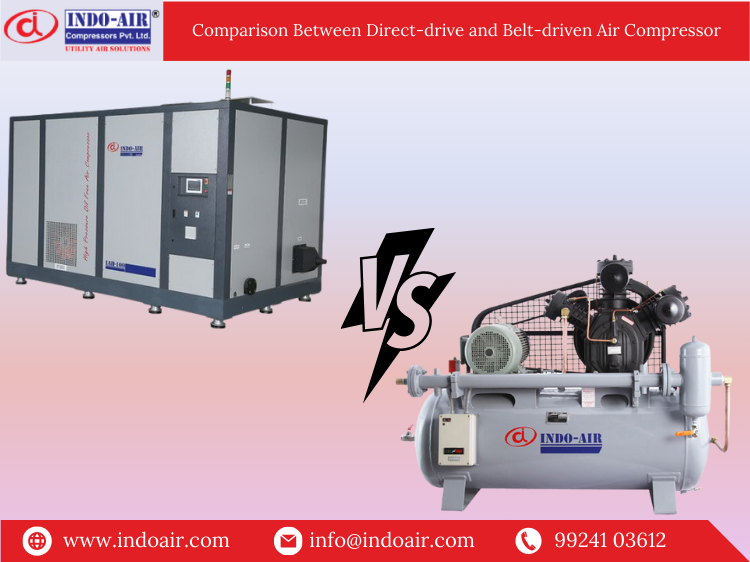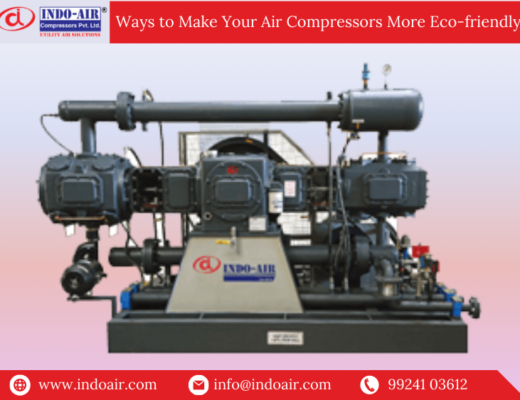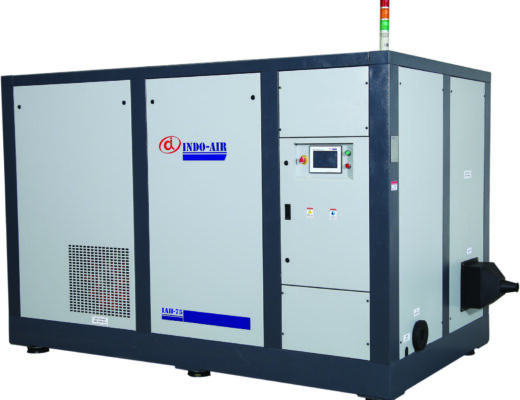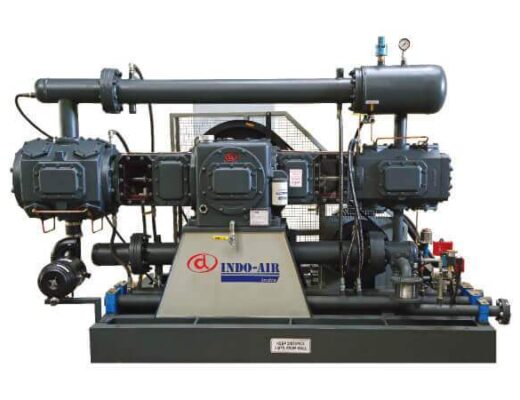Picking the right industrial compressor for your business needs can be tough as air compressor manufacturers in India manufacture different types of air compressors to suit different business requirements. SInce Direct-drive and Belt-driven Air Compressors are majorly two types of air compressors used in various industries, we will compare both in this article so that you could make informed decisions while selecting one.
Direct-Drive Air Compressor
A crankshaft connects the motor of a direct-drive air compressor directly to the air pump. For a reciprocating air compressor, the crankshaft rotates the pistons, and for a rotary-screw air compressor, the coupling turns the rotors. The motor’s speed (RPM) immediately affects the air pump’s speed and, in turn, the airflow (CFM). Direct-drive air compressors have a relatively basic mechanism with few moving components. Over 50 HP air compressors are often direct-drive.
Advantages of a Direct-Drive Air Compressor
- There will probably be less downtime and a longer service life for a direct-drive compressor. A direct-drive compressor requires less maintenance, wear and tear, and reliability due to its fewer moving parts than a belt-driven compressor. Over the compressor’s lifetime, you’ll save time and money on maintenance because there are no belts to change.
- Additionally, a direct-drive compressor uses less energy since less power is lost between the motor and the air end due to the absence of belt slippage or loss. Accordingly, a compressor with the same horsepower that runs on a direct drive will consume less electricity than one that runs on a belt. That can result in significant energy savings over time.
- These compressors are also more dependable in challenging conditions because they don’t have belts.
Disadvantages of a Direct-Drive Air Compressor
Compressors with direct drive do have several drawbacks. One of the main ones is capital cost; a compressor with a direct drive will initially cost more than one with a belt drive. Although direct-drive compressors require fewer maintenance overall, the expenses associated with such repairs may be greater. A direct-drive compressor is more difficult to remove and fix if something goes wrong because the motor is attached directly to the air end; this will probably necessitate hiring a highly qualified technician.
Belt-Driven Air Compressor
A belt and pulley system powers the air end of a belt-driven air compressor, also known as a belt-drive air compressor. The air pump that drives the rotors or pistons and the air compressor motor are connected by a belt. Power is transferred to the air end by a pulley system by means of the belt, which is driven by the air compressor motor. The air compressor’s maximum pressure (PSI) and airflow (CFM) capability are determined by the pulley size. Piston air compressors are often powered by belts.
Advantages of Belt-Driven Air Compressor
The primary benefit of a belt-driven air compressor is its flexibility; the machine’s CFM and PSI ratings can be modified simply modifying the arrangement of the belt and pulley. This adaptability might be advantageous for businesses like carpentry and auto repair shops that could need to adjust their pressure in the future, which would alter the CFM. Initially, a belt-drive compressor made by industrial air compressor manufacturers is typically less expensive.
DisAdvantages of Belt-Driven Air Compressor
A belt-drive air compressor’s primary drawback is maintenance. Belts need to be regularly inspected to make sure they are not worn, are aligned correctly, and are kept at the right tension. A misaligned belt and pulley system might hinder the compressor’s performance and prevent it from producing the desired airflows and pressures. Moreover, more downtime results from regular belt tweaks or modifications.




